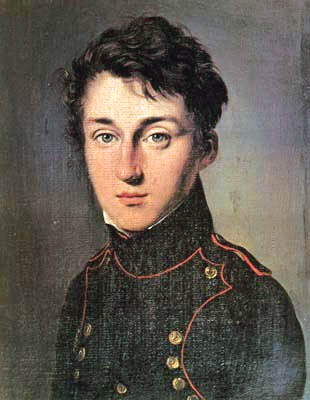Hot Bodies
July 22, 2010
Humans are
warm-blooded animals. Thanks to the chemical reactions our bodies use to "burn" sugars and fats, and biological
homeostasis that controls these reactions, we maintain our
body temperature at about 98.6
o Fahrenheit (37.0
o C). This is just a median number, since a healthy human body temperature will vary about a degree Fahrenheit during a 24-hour cycle. Assuming you keep a normal sleeping schedule, your body temperature is lowest at about 4:00 AM and highest at about 5:00 PM. Much of the year, at least in the Northeastern part of the US
where I reside, there is a large differential temperature between a human and his environment. If we're lucky enough to work in an air-conditioned indoor environment, a large differential temperature is maintained during most of the day for most of the year.
The
Second Law of Thermodynamics tells us that where there's a temperature difference, extraction of energy is possible. This is because heat flows from a warmer body to a colder body, a principle discovered by
Sadi Carnot. Quantitatively, the thermal energy output of a resting human is about a watt per kilogram. An exercising human emits three times that. Calculations for the quantity of air conditioning needed in a building usually estimate about 100-150 watts per person. We could harness this heat energy from our bodies if we festoon ourselves with pipes and rig a
heat engine, but there's an easier way. The
thermoelectric effect is a way to convert a temperature difference to electrical current directly, albeit with low efficiency.

Sadi Carnot
DARPA, the US Defense Advanced Research Projects Agency, has been sponsoring research in using body heat to power electronic devices. This is a continuation of its
Energy Starved Electronics program that seeks to reduce power consumption in electronic devices.
Anantha Chandrakasan, an electrical engineering professor at
MIT, has been working on the idea of using body heat and body movement to power electronic chips.[1-6]. Chandrakasan has been exploiting
thermoelectric materials that extract energy at only a few degrees temperature difference to generate up to 100 μW of power.[2] One problem with thermoelectrics is that their output voltage varies, since it's a direct function of the temperature difference. Chandrakasan's team, which included Yogesh Ramadass, now employed by
Texas Instruments, devised circuitry to match the thermoelectrics with an energy-storage capacitor.[3]
Of course, such devices will not work when implanted in the body, or when the ambient temperature is 98.6
o Fahrenheit, since there is no differential temperature in either case; but they will be useful, nonetheless. This research was presented at the 2010
International Solid State Circuits Conference last February.
The single, "
98.6," sung by James Barry Keefer (a.k.a, "Keith") of Philadelphia, reached no. 7 on the February, 1967,
Billboard Hot 100. I was a
Top-40 DJ at the time, working my way through college.
References:
- Michael Belfiore, "Embedded Technologies: Power From the People," Smithsonian magazine, August 2010.
- Shana Leonard, "Thermal Energy Harvesting May Power Wearable Sensors," QMed, April 14, 2010.
- Alyssa Danigelis, "Alt Power from Heat and Mini-Vibes," Discovery, February 16, 2010.
- Nic Mokhoff, "MIT researchers simplify energy harvesting circuits," EETimes, February 16, 2010
- Heat-powered Devices Could Eliminate Need for Batteries, Scientific Computing.
- David L. Chandler, "Power from motion and vibrations," MIT News Office, February 16, 2010
- David L. Chandler, "Self-powered sensors," MIT News Office,
February 11, 2010.
Permanent Link to this article